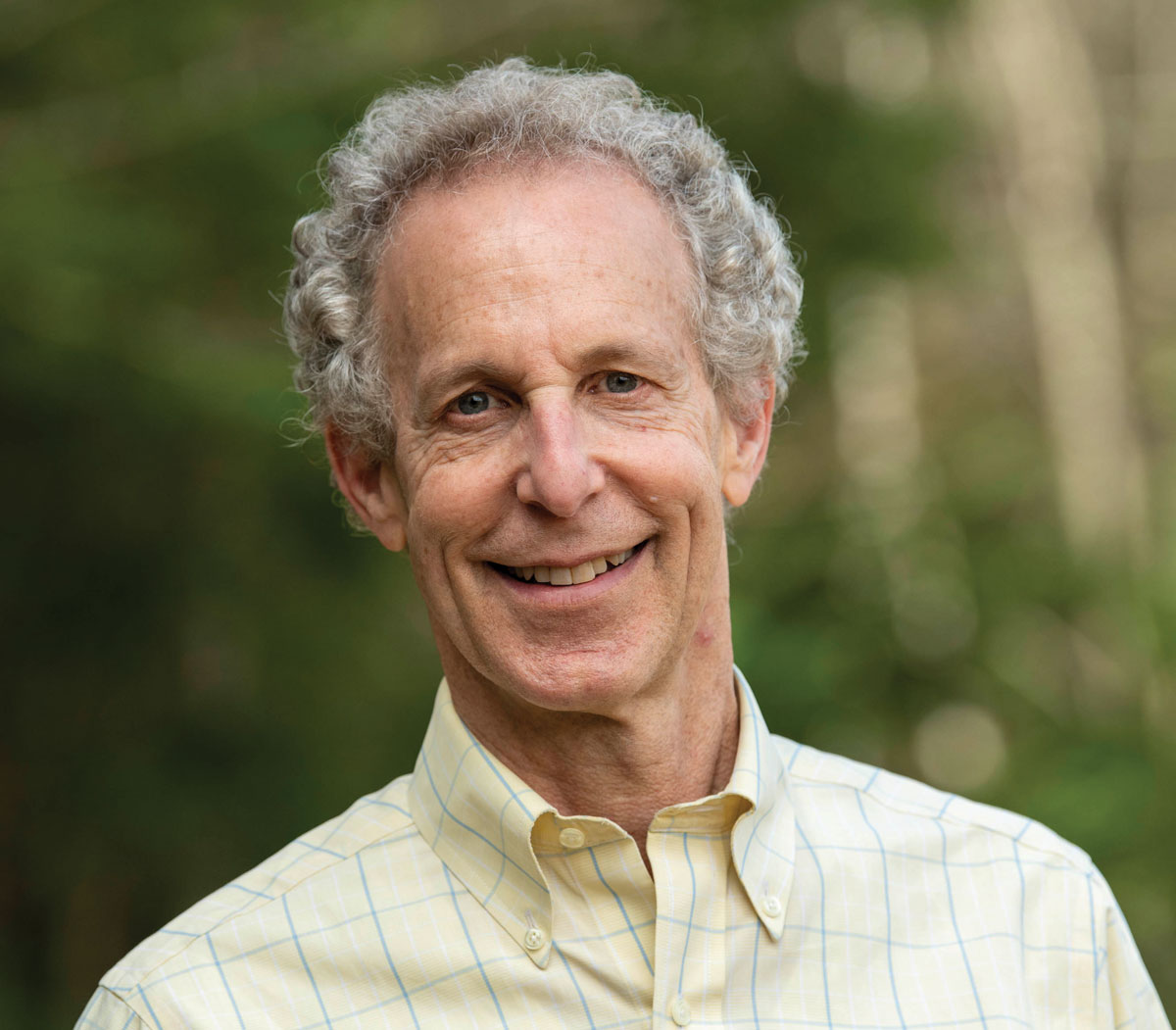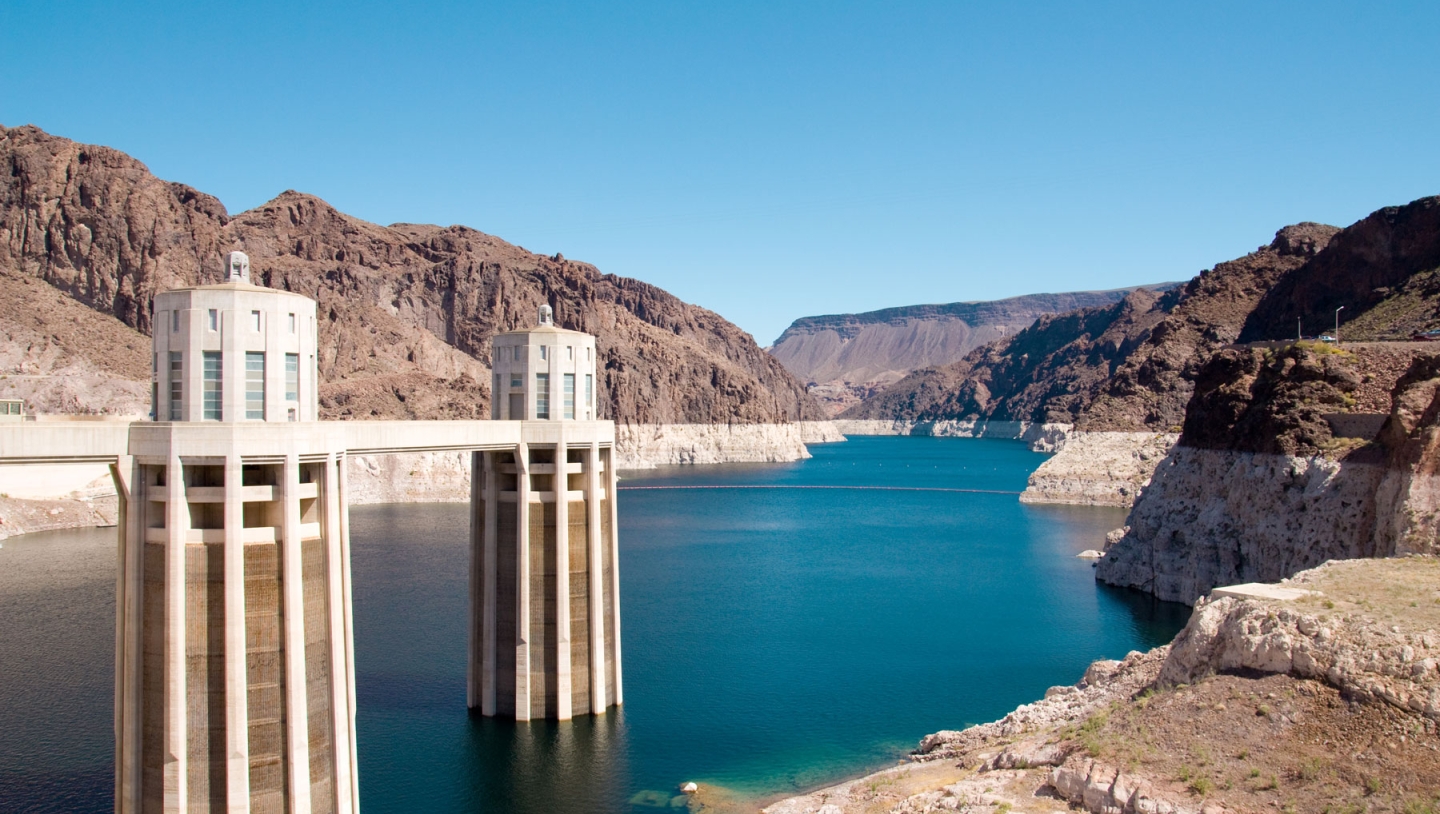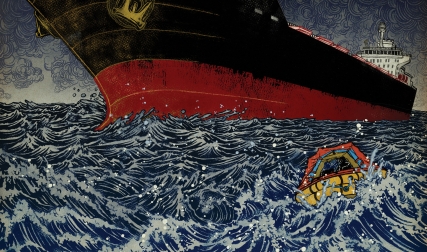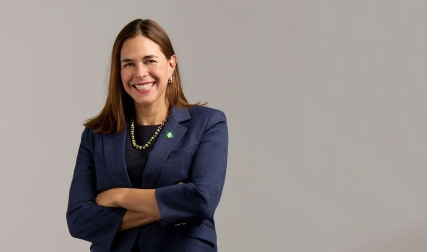In the fall of 2020, The New York Times broke a story with the intriguing headline, “Environmentalists and Dam Operators, at War for Years, Start Making Peace.” Climate reporter Brad Plumer ’03 wrote of an unprecedented joint statement, signed by the National Hydropower Association and environmental groups including American Rivers and the World Wildlife Fund, that signaled a breakthrough in the decades-long impasse around construction, relicensing, and removal of dams. The news had far-reaching implications for the nation’s ability to curb the worsening climate crisis.
The groups’ recommendations were the result of more than two years of negotiation. The peace broker? Dan Reicher, a researcher at the Stanford Woods Institute for the Environment. Reicher had made a name for himself in green energy circles. He’d been a top litigator at the Natural Resources Defense Council (NRDC). He’d served on the board of directors of American Rivers, the country’s preeminent river conservation group, and founded a center at Stanford University’s law and business schools that focused on energy policy and finance. He was also an avid kayaker and environmentalist.
Reicher knew that the modern environmental movement had begun with the seven-year battle between John Muir’s nascent Sierra Club and the damming of the wild and high Hetch Hetchy Valley, just north of Yosemite, California, back in the 1910s. The antagonism between environmentalists and dam builders had hardened through the intervening century. The hard line drawn by some environmentalists—that all dams should be removed—had produced only a handful of victories. Lawsuits and regulatory disputes over dam expansion and construction hampered the industry’s ability to attract investment. Competing agendas of clean-energy supporters and free-river advocates, power companies, irrigation and water-rights holders, Native tribes, sport fishermen, recreational boaters, and water- and electricity-starved municipalities had grown so intractable that hardly any major dams were constructed in the United States in the past half-century. Hydropower appeared to be a nonstarter.
In 2017, though, as the climate crisis deepened and the need for renewable energy intensified, Reicher wondered why hydropower hadn’t become at least a part of the national debate. It was, after all, the largest source of renewable energy on the planet. What if green, renewable hydroelectric capacity could be increased without causing additional ecological damage to the country’s rivers? That should be worth a conversation, Reicher thought.
What if green, renewable hydroelectric capacity could be increased without causing additional ecological damage to the country’s rivers?
He figured this could be a compelling topic for a program at the Woods Institute called “Uncommon Dialogues”—the institute’s signature method for facilitating engagement around fraught sustainability issues. But he had to do some research first.
With a colleague, Reicher got a handful of grad students to dig into various aspects of rivers, dams, and hydroelectricity. “I really needed to take the measure of U.S. hydropower,” Reicher recalls, “and get myself up the learning curve and see whether there was potential.”
The graduate students turned up startling data: There were some 90,000 dams in the country, but only about 2,200 of them generated electricity. Hydropower dams supplied about 7 percent of the nation’s electrical energy while holding 90 percent of the nation’s electricity storage capacity. According to a 2016 U.S. Department of Energy (DOE) analysis, the country could increase its hydropower capacity by 50 percent without building any large dams.
Reicher saw an opening. How many of the 87,000-plus existing dams built for irrigation, navigation, water supply, or flood control might be modified to produce zero-carbon-emission hydropower? How many of the silted-in, uneconomic, and otherwise obsolete dams might be sensibly torn down, returning their rivers to a more natural state? In other words, could the hydropower industry and the environmentalists both get what they wanted—more hydroelectric power and fewer dams at the same time?
He approached Chris Field, director of the Woods Institute, and proposed convening a discussion around hydropower. “These groups have been at each other’s throats for decades,” Reicher told Field. Climate change had altered the dynamic because of the increasing likelihood that severe drought and floods could damage river ecosystems even more than dams did.
“There was just a glimmer of hope that this one would work,” Field confessed to a reporter. “It would be hard to find two communities more diametrically opposed than environmentalists and the hydropower industry.”

Reicher came by his concern for the environment during a lifetime spent outdoors. He started camping as a Boy Scout in Syracuse, New York. At age 7, flipping through an outdoor gear catalog, he noticed a winter parka trimmed in wolverine fur. He had just learned in school that wolverines had been nearly wiped out in the U.S. Lower 48. With his mother’s help, Reicher wrote the manufacturer a letter. Not long after, he got a response from the company saying it was dropping the parka. “That was my first taste of environmental advocacy,” Reicher recalls.
He fell in love with water at his family’s summer place on Cazenovia Lake, New York. In high school, he tested water samples from nearby Onondaga, then the most polluted lake in the nation, and swam in Skaneateles, in the Finger Lakes region of New York, whose water is so clean that to this day it’s one of the few unfiltered urban water supplies in the United States. He became smitten by free-flowing rivers during two summers at the Colorado Rocky Mountain School, where he was introduced to whitewater kayaking by former French canoeing champion and kayaking pioneer Roger Paris. It was only natural that Reicher would be drawn to Dartmouth and, once there, get swept up in the Ledyard Canoe Club.
By the mid-1970s, Ledyard had become a kayak racing powerhouse that included U.S. Olympic team paddlers. It was also famously known as a club whose members pursued wild, strenuous, and logistically complicated river expeditions around the world. A fellow Ledyardite, Tony Anella ’78, had researched the history of the river flowing through his hometown of Albuquerque, New Mexico—the Rio Grande—and determined that no one had ever documented running its full 1,888-mile length from source to sea. Anella, Reicher, and classmates Rob Portman ’78 and Peter Lewitt ’78 became the first. With support from Dartmouth and the National Geographic Society, they completed the trip during six drought-stricken months in 1977. Reicher, a biology major, received academic credit for assessing the Rio Grande’s water quality and aquatic life.
Reicher never forgot his visceral reaction to the effects of drought, overuse, and pollution on a natural river system. It drove his career choices. His first job out of college was as a legal assistant on the U.S. President’s Commission on the Accident at Three Mile Island (led by then-Dartmouth President John Kemeny). He did paralegal work on hazardous waste for the U.S. Justice Department, earned his law degree from Stanford in 1983, served as assistant attorney general in Massachusetts, and became assistant secretary of energy for energy efficiency and renewable energy in the Clinton administration. With Scott Brown ’78, he founded a business called New Energy Capital, one of the nation’s first investment firms focused exclusively on financing renewable energy projects. In 2007 he headed west to direct climate change and clean energy initiatives at Google. In 2011, he became founding executive director of Stanford’s Steyer-Taylor Center for Energy Policy and Finance.
By the time he convened an Uncommon Dialogue around hydropower in March 2018, Reicher had built scores of relationships across a wide range of businesses, government agencies, and nongovernmental organizations (NGOs). He dipped into his Rolodex and invited 20 leaders, experts, and advocates to Stanford. At the table sat hydropower executives, investors, and lobbyists. Staff members from environmental groups including the World Wildlife Fund, the Nature Conservancy, the Union of Concerned Scientists, and the NRDC joined them. Brian Graber ’93, a senior director with 15 years’ experience at American Rivers, was there, along with attorney Mary Pavel ’88 of the Skokomish Tribe of Washington, former staff director of the U.S. Senate Committee on Indian Affairs.
The first few conversations were “chilly,” as Reicher later put it. At the end of each meeting, though, he asked everyone if they wanted to continue. Everyone said yes.
The group coalesced around the subject of dam safety. Both sides of the discussion agreed on the urgent need for inspections and funding.
The breakthrough that changed the conversation—giving Reicher his first real moment of hope—was turning to look at what had been done on Maine’s Penobscot River.
For decades, the standoff between environmentalists and the hydropower industry had focused on the merits of individual dams. The Penobscot River Restoration Project, addressing not just one dam but a complete river basin, resulted in the removal of two large dams from the river’s lowermost section, construction of a state-of-the-art fish bypass around a third, and increased hydropower capacity at others. In the process, thousands of miles of habitat along the Penobscot’s main stem and its tributaries were reopened for nearly a dozen native species of sea-run fish, including Atlantic salmon, all while continuing to generate more electricity. The landmark agreement had been hammered out during 17 years by a remarkably diverse and patient array of partners, including the Penobscot Indian Nation, energy companies, state and federal agencies, and environmental nonprofits. A couple of the participants in Reicher’s discussions had been influential in the project. It became a working model.
Pavel, whose Skokomish reservation had been devastated by the 1924 construction of Cushman Dam in western Washington, had bitterly sought the dam’s removal for years. Her frustration represented tribal resentment across the country. She was impressed by how Reicher kept people on opposite sides talking to each other. “He knew when to pause. When to say, ‘Okay. Let’s hold it here,’ and bring in someone next time with additional information or a new perspective,” she says. “He looks at things holistically, the way good generals look out at things far away, on the horizon. He kept us with the guns in our holsters.”
Tom Kiernan ’81, the new executive director of American Rivers, came on board midway through the dialogue. He echoes Pavel: “Dan knew finance, DOE, how federal policy is crafted. You need enough understanding of the lay of the land to see the opportunities. Dan had that sense. He kept pushing us, nudging us, challenging us not to find a middle ground, but create a middle ground.”
“Renewable energy and river conservation was a classic ‘Dan’ combination.”
In October 2020, the group signed off on a 14-page framework agreement that outlined recommendations organized around the three Rs of U.S. dams: rehabilitate them to improve safety, increase climate resilience, and mitigate environmental impacts; retrofit dams to increase generation and pumped-storage capacity while enhancing fish passage, water supply, and grid integration of solar and wind; remove unsafe and obsolete dams or those causing harmful impacts to the environment that can’t be adequately mitigated.
The unprecedented agreement drew national attention. During the next six months, several working groups launched by the agreement focused on the specific funding, policy, and technological changes that would be needed to advance its goals. Action at the federal level was obviously necessary.
The 2020 election opened a door, with early signals that the Biden administration would prioritize the strengthening of national infrastructure. Getting support from key lawmakers would be critical.
The mid to late 1970s at Dartmouth had seen a flourishing of interest in ecology and the environment. Reicher and a small cohort of fellow students bonded through their interest in the environment and other big problems. A bunch of them lived together in a house in Norwich, Vermont, where they invited professors to their potluck dinners. After graduation, they held regular reunions, vacationed together, and shared their professional networks. They called themselves “The Granola Gang.”
In April 2021, in need of allies on Capitol Hill, Reicher got in touch with one of the gang, Rob Portman ’78, then a Republican senator from Ohio. Since kayaking the Rio Grande together, Reicher and Portman, despite different political affiliations, had become close friends. Among many river trips they’d made together was a 1984 kayak adventure down the Yangtze River in China, before construction began on the Three Gorges Dam, the world’s largest. Portman was best man at Reicher’s wedding. He was also the lead Republican behind the bipartisan infrastructure bill.
Reicher also reached out to another Granola Gang member, Annie McLane Kuster ’78, a Democratic congresswoman representing New Hampshire’s 2nd District who sat on the U.S. House Committee on Energy and Commerce. With the help of Portman and Kuster, Reicher’s funding proposal was rushed to the U.S. Congress in time to influence negotiations on the bill, which had mostly ignored dams. When the bill became law in November 2021, it included $2.4 billion earmarked for the three Rs—roughly a third for each. The total represented a small portion of the $1.2-trillion infrastructure bill and a fraction of the total $62 billion requested in the group’s proposal, but it was a historic investment and a huge victory.
Meanwhile, Kuster had gone to work on a larger bill. She was the lead sponsor of the Twenty-First Century Dams Act, introduced in the House in July 2021. If enacted, it will provide more than $20 billion in federal support across all areas identified in the Uncommon Dialogue agreement. The bill’s provisions are key to current congressional efforts to advance a three Rs tax credit and to expedite the process for installing hydropower at federal dams. Additional bills based on the work of the Uncommon Dialogue will be introduced to reform, among other things, federal regulation of U.S. dams.
Kuster looks at the success of the process and sees some of Dartmouth from the 1970s. “Dan brought people together. That started with sitting around those potluck dinners,” she says. “I see the same traits from those early days. We all shared an interest in solving problems. We were more interested in creative solutions than conflict.”
Portman remembers how serious Reicher had been about the science he did on the Rio Grande trip and isn’t surprised by what he’s achieved with the hydropower agreement. “He’s always been enthusiastic—and pragmatic,” says Portman. “Renewable energy and river conservation was a classic ‘Dan’ combination.”
Reicher has recently started thinking about why the U.S. solar industry, land conservation and environmental NGOs, and tribes are increasingly at odds over utility-scale solar projects. He’s been in touch with more people in his network, including a fellow board member of the Irving Institute, Abigail Ross Hopper ’93, president of the national trade organization for America’s solar energy industry. Along with the Nature Conservancy, they’ve convened another Uncommon Dialogue, hoping it can do for large-scale U.S. solar development and land conservation what Reicher and colleagues have done for hydropower and river conservation.
“The prospects,” says Reicher, “are sunny.”
Jim Collins, a former editor of DAM, is the author of The Last Best League.




